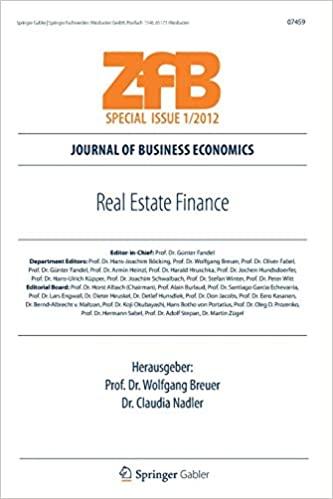Question
1.A firm has fixed operating costs of $525,000. The sales price per unit is $35 and its variable costs per unit is $22.50. The firm's
1.A firm has fixed operating costs of $525,000. The sales price per unit is $35 and its variable costs per unit is $22.50. The firm's operating breakeven point in units is ________. A. $42,000 B. $23,330 C. $52,000 D. $32,000
2. In evaluating the initial investment for a capital budgeting project, ________. A. an increase in net working capital is considered a cash inflow B. net working capital does not have to be considered C. an increase in net working capital is considered a cash outflow D. a decrease in net working capital is considered a cash outflow
3.The ________ approach is used to convert the net present value of unequal-lived projects into an equivalent annual amount (in net present value terms). A. investment opportunities schedule B. annualized net present value C. risk-adjusted discount rate D. internal rate of return
4. An increase in fixed operating costs will result in ________. A. a decrease in the degree of financial leverage B. an increase in the degree of operating leverage C. a decrease in the degree of operating leverage D. an increase in the degree of financial leverage
5.If a firm's sale price per unit decreases, the firm's ________. A. variable costs per unit will decrease B. variable costs per unit will increase C. operating breakeven point will increase D. operating breakeven point will decrease
6.A behavioral approach that evaluates the impact on a firm's return through simultaneous changes in a number variables of a project is called ________. A. scenario analysis B. Monte Carlo simulation C. sensitivity analysis D. simulation analysis
7.Which of the following is true of arguments for dividend relevance? A. Investors are generally risk averse and attach less risk to current dividends than future dividends or capital gains. B. A firm's value is determined solely by the earning power and risk of its assets. C. A clientele effect exists which causes a firm's shareholders to receive the dividends that they expect. D. The value of a firm is unaffected by dividends as it functions in a perfect market.
8.The optimal capital structure is the one that balances ________. A. return and risk factors in order to maximize profits B. return and risk factors in order to maximize market value C. return and risk factors in order to maximize dividends D. return and risk factors in order to maximize earnings per share
Step by Step Solution
There are 3 Steps involved in it
Step: 1

Get Instant Access to Expert-Tailored Solutions
See step-by-step solutions with expert insights and AI powered tools for academic success
Step: 2

Step: 3

Ace Your Homework with AI
Get the answers you need in no time with our AI-driven, step-by-step assistance
Get Started


